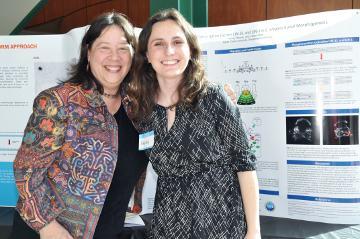
The Role of the Transcription Factors LIN-31 and LIN-1 in C. eleg
Hayley Raquer
Faculty Mentor: Leilani Miller
Research abstract follows. Please aim for 250 words or fewer. The C. elegans hermaphrodite vulva is an ectodermal organ that connects the internal gonad with the external environment. Vulval morphogenesis involves cell-fate specification, cell adhesion, cell fusion, cell migration, and cell invasion. The different fates of the six vulval precursor cells (VPCs) are determined in response to several extracellular signals and divide three times in a particular pattern to produce 22 descendants that begin as a linear array, then a tube, and finally a stack of seven toroids, with the anchor cell at the apex of this tube connecting to the uterus. The anchor cell then fuses to the utse uterine multinucleated cell, causing the opening of the tube. The early signaling pathways involved in vulval development are well understood, but these later morphogenetic events are not as well characterized. Our lab studies two transcription factors, the winged helix transcription factor LIN-31 and the Ets transcription factor LIN-1. Both are phosphorylated by MAP kinase (MAPK) downstream of the Ras/MAPK signal transduction pathway in the P6p cell at the beginning of vulval development. It has been known that LIN-31 and LIN-1 are involved in vulval development but the exact role they play had not been determined. Recent results in our lab have uncovered a sensitized genetic background, when both LIN-31 and LIN-1 are defective for phosphorylation results in 60% egg laying defective (Egl) worms. Preliminary confocal analysis of this double phosphorylation defective mutant shows that the strong Egl phenotype may be a result of improper toroid fusion and cell migration.